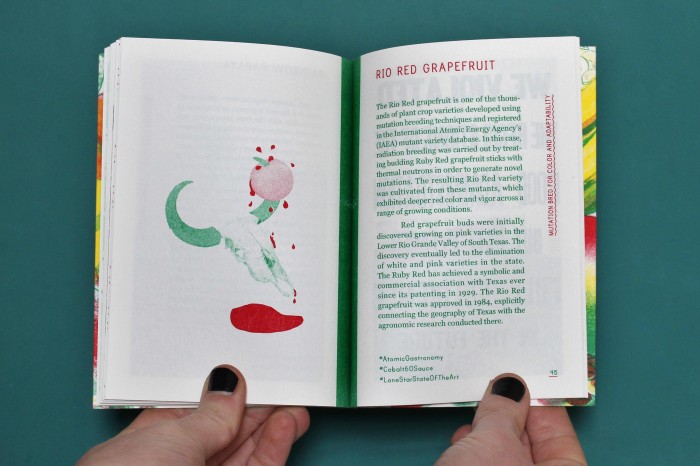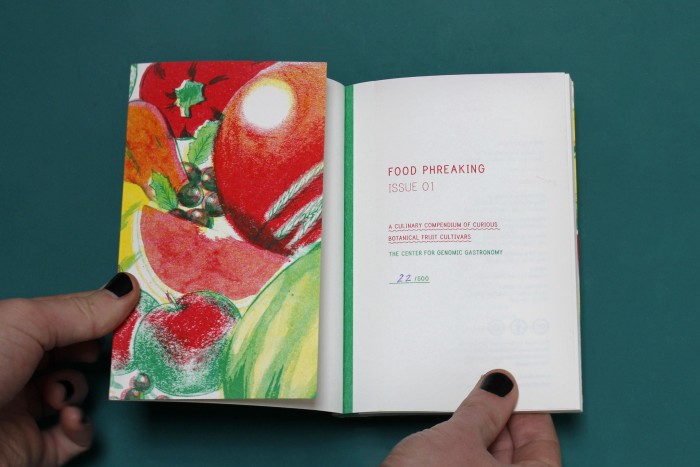
FOOD PHREAKING ISSUE 01: A CULINARY COMPENDIUM OF CURIOUS BOTANICAL FRUIT CULTIVARS
This publication is a collection of stories that might be useful to Food Phreakers. Who are Food Phreakers? They are individuals and groups interested in experimenting with human food systems at multiple scales. Food Phreakers believe that food culture should be free, open and accessible. Some Food Phreakers have professional skills as farmers, seed savers, chefs, biohackers and food scientists. Others tinker in their backyards, basements, kitchens or home labs. The Food Phreaking journal aims to connect foodies who care about sustainability with the scientists and hackers who care about open culture. Food Phreaking is where food, technology, and open culture meet.
In this first issue, we examine a range of botanical fruit cultivars that have been manipulated by human food cultures. Wild plants, ancestors to our domesticated varieties, make up a very small percentage of what humans eat. Most of the animals and plants that we eat are domesticated and cultivated. For example, some of the fruit cultivars featured in this publication have been selectively bred to be larger or sweeter than their crop wild relative. Other cultivars have been genetically modified for pest resistance or herbicide tolerance. Each entry in this issue describes a specific cultivar or variety of botanical fruit that exhibits certain agricultural or culinary traits preferable to humans. Collectively, these examples demonstrate how organisms and environments are manipulated to suit human needs and desires.

It can also be said that organisms and environments manipulate us humans. For example, in the tropics breadfruit has become a staple food because it provides cheap calories, despite the fact that many eaters initially dislike the taste and struggle to cook with it. Similarly, large agricultural regions and entire countries transition to monocultures in order to create uniformity and efficiency, at the expense of resilience and biodiversity. Other times plants are chosen for the color of their flowers or taste of their fruits. Our very human desires for beauty, profit and predictability can lead us to propagate one species or cultivar over another.
Breeders, farmers, eaters, chefs, governments and companies are all agents of selection, whose preferences and habits contribute to the cultivars that are observable across the planet’s agricultural lands. These cultivars are given multiple names, from the scientific to the colloquial. In this book we have primarily used English common names or corporate trademarks to identify a fruit cultivar, but many of these fruit cultivars are known by additional names around the world.
For this first issue we decided to focus on botanical fruits, because they account for a large portion of the food that is grown in the world. Botanical fruits include most of the world’s major grain crops as well as colorful fruits like apples and mangoes that have extensive cultural and symbolic meaning. But who gets to decide what changes are made in a single species of botanical fruit such as apple, corn, mango or rice?

Food Phreaking Issue 01 is intended to help amateur readers, who are not involved in agronomy, agribusiness or the food industry, familiarize themselves with some of the technical aspects of agricultural biodiversity.
At the Center for Genomic Gastronomy, we anticipate a future where the ability to manipulate the phenotypical traits of fruits is rapid, easy and widely available. We believe that during the 21st century, many chefs, home cooks and eaters will become knowledgeable about and motivated to experiment with a wider range of fruit cultivars than they experience today. In 2035, testing a new cultivar might be as easy as loading an app on your smart phone is today. But plants still need time to grow. Fad cultivars will come in and out of fashion on a seasonal basis, similar to clothing, and the environment these plants are nurtured in will have a huge impact on their agricultural and gastronomic suitability. So far, developments in agricultural biotechnology have resulted in the reduction of biodiversity. If emerging biotechnologies become more accessible, will we see the opposite trend?
Food Phreaking is the journal of experiments, exploits and explorations of the human food system. We hope you use this survey of botanical fruits as a starting point to understand past and present fruit cultivars, and to imagine a range of potential food futures.

purchase, dowload or donate to Food Phreaking here.